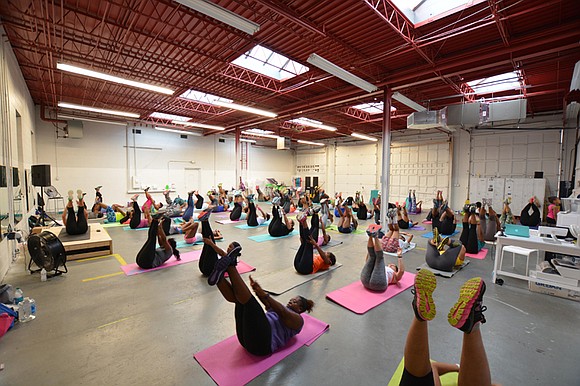Getting fit in the new year
1/13/2018, 10:46 a.m.
By Glenn Ellis
Trice Edney News Wire
It’s common for people to make resolutions for the new year to eat healthier and work out.
Millions of people find themselves unsatisfied with their excess body weight or sluggish physical condition at the turn of the calendar. The start of a new year inspires adults to give up junk food, join a gym or make healthier choices.
It is well established that regular moderate to vigorous physical activity reduces the risk of future cardiac events in healthy individuals and individuals with existing cardiovascular disease.
So, if you’re like most Americans, getting more exercise is on your list of New Year’s resolutions. And for good reason: Exercise is one of the key methods for lowering cholesterol — and blood pressure — without medications. And it helps to drop pounds.
Because bodies are living, breathing matter, they need to be stimulated in order to become more fit. This means exercise is ideally done just outside your comfort zone. But as many people know all too well, it’s not that easy to start a fitness routine, particularly for the out of shape and the inconsistent.
To avoid being overwhelmed, set realistic expectations.
Exercise does not need to be a formal activity. It does not require a big chunk of time carved out of the day. There used to be a time when people stayed fit by doing ordinary things like housework, taking the stairs and playing with their kids.
To lower cholesterol and blood pressure, one needs to exercise an average of 40 minutes at a moderate to vigorous intensity three to four days each week.
Guidelines from the U.S. Department of Health and Human Services suggest 75 minutes of vigorous aerobic activity or 150 minutes of moderate activity every week for adults.
Vigorous activities include running, jumping rope or playing squash, activities where you can’t say more than a few words at a time. Moderate activities include brisk walking, dancing or biking, where you usually can talk but not sing.
Heart rate is another way to gauge activity level. Start with 220 and subtract your age. Moderate activity is 50 to 70 percent of that number. For a 50-year-old, that’s a heart rate of about 85 to 120, according to the Centers for Disease Control and Prevention.
For the average person, a good fitness program consists of exercises that work out the whole body. A cardio workout improves the function and health of the heart, lungs and blood vessels.
Some activities can even double as weight-bearing exercise, the other component of an ideal fitness program. Weight-bearing exercises enhance the function and health of the bones, muscles, joints and connective tissues.
This type of exercise involves anything that uses body weight against gravity. Examples include walking, jogging, playing basketball, yoga, martial arts, push-ups, weight training and free weights. Experts suggest starting out with one set of eight to 15 repetitions of one exercise two days a week.
To get maximum benefits, focus on working the larger muscle groups. Most of the muscle mass in the body lies in the trunk, thighs, chest, back and abdomen. Targeting these areas will offer the biggest bang for your buck, so to speak, for your workout time.
Many a New Year’s resolution has been thwarted by injury. Some people are so gung-ho about getting fit that they are too aggressive at the beginning of their fitness program. As a result, they may become injured, feel a lot of soreness or think of exercise as an unpleasant experience.
Start slow and then gradually progress. The thing most people forget is that they didn’t become out of shape overnight. So don’t expect to become well-conditioned overnight.
Weave exercise into daily activities. For example, if you commute to work, think about walking part of the way if you can.
About a third of New Year’s resolvers make weight loss their primary goal, and about 15 percent aim to begin an exercise program.
For some, the resolution to become more active could literally be the difference between life and death. Research released by the American College of Sports Medicine finds that being more physically active can help adults suffering from heart disease keep premature death at bay.








